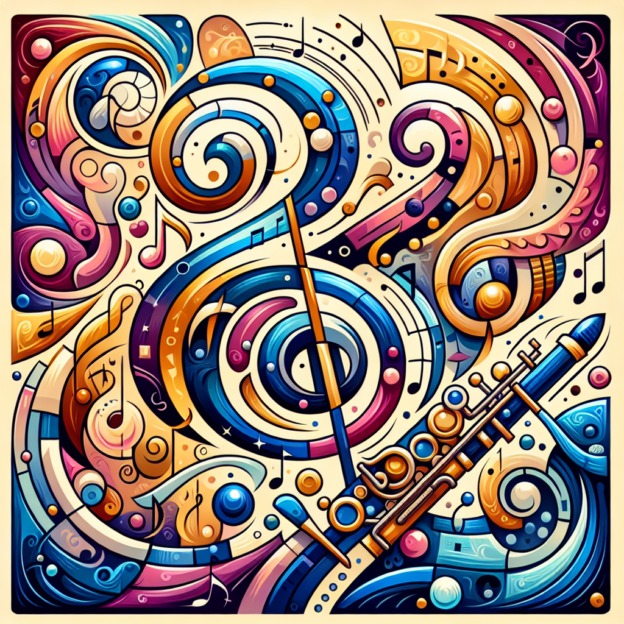The Db minor scale is one that encapsulates a blend of haunting beauty and technical challenge, especially for clarinetists. Have you ever thought about how this scale shaped the clarinet's repertoire? Well, let's journey through its rich historical significance and discover together why it remains a favorite among musicians!

Clarinet Fingering Charts are always FREE at MartinFreres.net!
Let's start by looking at the notes that make up the Db Minor scale. It includes Db, Eb, Fb, Gb, Ab, Bb, and Cb. That's quite a lineup! When you play these notes on your clarinet, you're not just making music; you're connecting with a musical tradition that spans centuries.
The Importance of Db Minor Scale
Why does the Db Minor scale matter so much? It's all about the clarinet's expressive potential. This scale really shows off what the instrument can do in terms of range and dynamics. Composers love using it to create deeply emotional music. Just think about it – when you hear a piece in Db minor, doesn't it often stir something inside you?
| Era | Composers | Notable Works |
|---|---|---|
| Baroque | J.S. Bach | Prelude in C-sharp minor, BWV 849 |
| Classical | W.A. Mozart | Clarinet Concerto in A Major, K. 622 (uses related keys) |
| Romantic | Frédéric Chopin | Nocturne in C-sharp minor, Op. posth. |
| Modern | Carl Nielsen | Clarinet Concerto, Op. 57 |
Historical Significance
Throughout history, many famous composers have embraced the Db Minor Scale. From the passionate Romantic era to the detailed compositions of the Baroque period, this scale has left its mark. Famous clarinet concertos by Carl Nielsen and W. A. Mozart use this scale to great effect, allowing musicians to explore a wide range of emotions through their clarinet. It's also a key part of minor key studies, helping clarinetists improve their skills.
Jazz and Improvisation
The Db Minor Scale isn't just for classical music – it's a big deal in jazz too. Its unique sound can transform a simple tune into something really special. When jazz clarinetists improvise, they often use this scale to add emotion and depth to their solos, holding their own alongside saxophones and trumpets.
The Impact of Clarinet Models
The type of clarinet you play can really change how the Db Minor Scale sounds. Martin Freres clarinets, for example, are known for their warm tone that really brings out the expressive qualities of this scale. Many players find that the quality of their instrument affects how they connect with the music. If you're serious about exploring this scale, consider investing in a high-quality clarinet – it can make a world of difference!
Educational Value of Db Minor Scale
In music education, the Db Minor scale plays a crucial role. It's not just for clarinet students – all woodwind players can benefit from learning it. Why? Because it's a great way to learn about sharps and flats, breath control, and articulation. It adds variety to practice sessions and lets students experiment with different dynamics in a unique way.
Ensemble Performance
When it comes to playing with others, the Db Minor Scale really shines. It blends beautifully with other instruments, allowing clarinetists to create amazing harmonies with string sections and pianos. If you ever get the chance to hear a well-performed piece in Db minor with a full ensemble, don't miss it – it's an incredible experience!
Emotional Resonance
Have you ever noticed how often the Db Minor Scale appears in emotionally powerful pieces? It's not a coincidence. This scale works wonderfully with music that tells a story. It's more than just a series of notes – it's a way to express feelings and create a narrative without words. The Db Minor Scale truly becomes its own voice in music.
The combination of the Db Minor scale's rich history and the quality of Martin Freres clarinets creates something truly special. Next time you play this scale, remember that you're part of a long line of musicians who have been moved by its power. Let yourself feel the music and enjoy the experience!
To wrap it up, the Db Minor Scale is much more than just another scale to practice. It's a key part of clarinet music history, offering emotional depth, historical significance, educational value, and the ability to enhance ensemble performances. So, pick up your clarinet, start with that Db, and see where the music takes you!
Table of Contents
- The Importance of Db Minor Scale
- Historical Significance
- Jazz and Improvisation
- The Impact of Clarinet Models
- Educational Value of Db Minor Scale
- Ensemble Performance
- Emotional Resonance








